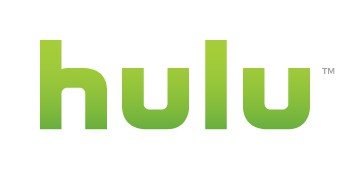 [Clarification 1/15/2018: This list only covers customer-owned modems approved by Charter Communications. It is not a comprehensive list of modems that may have been supplied directly by Charter/Spectrum, or its predecessors Time Warner Cable or Bright House Networks, which are obviously also acceptable. However, if you have a modem supplied by Time Warner or Bright House, it might not support the upgraded faster speeds Spectrum now offers. You might want to contact customer service to verify whether your current modem is capable of performing at the speeds now provided.]
[Clarification 1/15/2018: This list only covers customer-owned modems approved by Charter Communications. It is not a comprehensive list of modems that may have been supplied directly by Charter/Spectrum, or its predecessors Time Warner Cable or Bright House Networks, which are obviously also acceptable. However, if you have a modem supplied by Time Warner or Bright House, it might not support the upgraded faster speeds Spectrum now offers. You might want to contact customer service to verify whether your current modem is capable of performing at the speeds now provided.]
Charter Communications recently increased broadband speeds for most of their customers, and many cable modems that are still in use from the days of Time Warner Cable and Bright House Networks cannot support the company’s fastest speed tiers. As a result, Charter has updated their approved/recommended cable modem list to help customers obtain a modem that can support faster speeds.
Those customers who have moved away from a legacy Time Warner Cable or Bright House internet plan can get a free cable modem from a local Spectrum cable store. If you prefer to still own your own, here is the updated listing. We recommend choosing a model capable of supporting up to 300 Mbps speed because additional speed upgrades are likely in the future. Most customers now receive at least 100 Mbps service, so at least choose a model that can support that speed.
Gigabit (940 Mbps) Tier
At this time there are no modems that have passed certification testing for the Spectrum Internet 1 Gig speed tier (940Mbps). You need to use a cable modem supplied by Charter/Spectrum.
400 Mbps
| Vendor | Model |
|---|---|
| ARRIS | SB6190 |
| ASUS | CM-32_AC2600 |
| Linksys | CM3024 |
| NETGEAR | C7000-100NAS |
| NETGEAR | CM600 |
300 Mbps
| Vendor | Model |
|---|---|
| ARRIS | SB6183 |
| ARRIS | SB6190 |
| ARRIS | SBG6900-AC |
| ASUS | CM-16 |
| Motorola | MB7420 |
| Motorola | MB7540 |
| Motorola | MB7550 |
| NETGEAR | C6250 |
| NETGEAR | C6300 |
| NETGEAR | CM500-100NAS |
| SMC NETWORKS | D3CM1604 |
| TP-Link Archer | CR700 |
| TP-LINK | TC-7620 |
| Zoom | 5370 |
100 Mbps
| Vendor | Model |
|---|---|
| ARRIS | SB6141 |
| ARRIS | SBG6400 |
| ARRIS | SBG6580 |
| ARRIS | SBG6580-2 |
| ARRIS | SBG6700-AC |
| D-Link | DCM301 |
| LINKSYS | CM3008 |
| Motorola | MB7220 |
| Motorola | MG7310 |
| Motorola | MG7315 |
| NETGEAR | C3000-100NAS |
| NETGEAR | C3700-100NAS |
| NETGEAR | CM400 |
| NETGEAR | 450 CG3000Dv2 |
| TP-LINK | TC-7610 |
| TP-LINK | TC-W7960 |
| ZOOM | 5341J |
| ZOOM | 5345 |
| ZOOM | 5350 |
| ZOOM | 5352 |
| ZOOM | 5354 |
| ZOOM | 5360 |
| ZOOM | 5363 |
| ZyXEL | CDA30360 |
60 Mbps
| Vendor | Model |
|---|---|
| ARRIS | SB6120 |
| ARRIS | SB6121 |
| Netgear | CDM31T |
These modems are NOT RECOMMENDED, but are still allowed on the Charter/Spectrum network.
| Vendor | Model |
|---|---|
| ARRIS | SBG6950AC2 |
| ARRIS | SBG7400AC2 |
| ARRIS | SBG7580 |
| ASUS | CM-32 |
| LINKSYS | CG7500 |
| LINKSYS | CM3016 |
| NETGEAR | C3000v2 |
| NETGEAR | C3700v2 |
| NETGEAR | C6300-100NAS |
| NETGEAR | C6900 |
| NETGEAR | C7000v2 |
| NETGEAR | C7500 |
| NETGEAR | CM700 |
| NETGEAR | N450-100NAS |
| TP-LINK | CR500 |
| TP-LINK | CR1900 |
| TP-LINK | TC7650 |
| ZOOM Motorola | MB7621 |


 Subscribe
Subscribe
 Comcast’s Business division has
Comcast’s Business division has  Because the technology isn’t revolutionary, Starry can utilize equipment already for sale in the marketplace. Some commercial fixed-wireless services already exist using a similar approach, and Google itself is developing
Because the technology isn’t revolutionary, Starry can utilize equipment already for sale in the marketplace. Some commercial fixed-wireless services already exist using a similar approach, and Google itself is developing  Hulu has picked up an additional five million customers since the streaming service last reported subscriber numbers in May 2016 — an increase of 42 percent.
Hulu has picked up an additional five million customers since the streaming service last reported subscriber numbers in May 2016 — an increase of 42 percent.